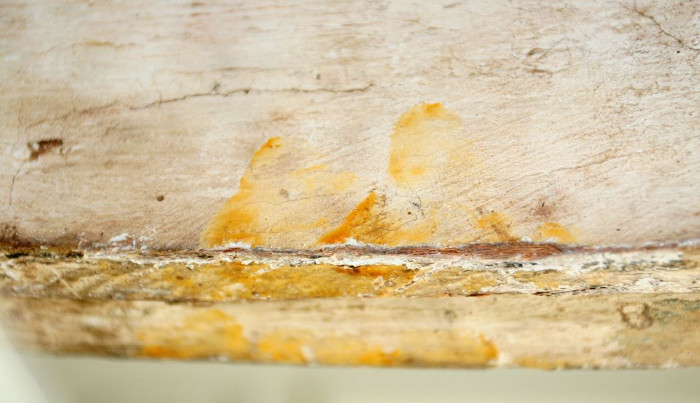Discover the 3000-year-old fingerprint of ancient Egypt
Researchers at the Cambridge Fitzwilliam Museum in England have found fingerprints dating to 3,000 years old inside the lid of an Egyptian coffin.
According to Egyptologist Helen Strudwick, this is the fingerprint of craftsmen. Although they were very skilled, they made a mistake by touching the coffin before the varnish could dry. These fingerprints were discovered in 2005 but have not been published since that time.
In a statement, the museum said the discovery of fingerprints " brings us closer to those who made coffins". According to the museum's information, fingerprints on the inside of the coffin lid, believed to belong to a cleric named Nespaweshefyt , also known as Nes-Amun , the head of the religious scholars of Amun-Re god at Thebes.

Ancient fingerprints are found on the inside of the coffin lid.
Researchers are examining the coffins dating back to 1,000 BC, including the use of X-rays at the museum and CT scans at a nearby hospital. This work aimed to find information that could be revealed to scientists 3,000 years ago how Egyptian coffins were manipulated.
Julie Dawson, head of conservation at the Fitzwilliam Museum, said the inside of the coffin was made from various pieces of wood, including the least part of an ancient coffin. The coffins will be displayed in a new exhibition called "Death on the Nile" starting February 23, focusing on how the Egyptian coffin design has evolved in more than 4,000 years.
According to Strudwick, the co-curator of the exhibition, the coffins show the skills and attention of the ancient Egyptians for things prepared for life in the next life. Even with modern humans, death is almost a taboo topic, and this is like an unhealthy preoccupation. But for the ancient people, this represents an obsession with life as well as a desire to ensure the perfect transition will take place after the last breath is poured out.
- 3,600-year-old mummy in Egypt
- Discovered an ancient tomb over 3,500 years old in Egypt
- Egyptian blue 'alive' from the tomb
- Discover 4 ancient temples in Egypt
- The shirt 5,000 years ago looks exactly like modern clothes
- Discover 2,250-year-old coins
- Discover animal mummies in Egypt
- Homosexuality in ancient Egypt
- Discovered the 4,500 year old sphinx in Egypt
- Develop 'universal' fingerprints, unlock all phones
- Learn the disasters that destroyed ancient Egypt
- 1,700-year-old ancient school in Egypt
 Discovered an ancient centipede fossil 99 million years old
Discovered an ancient centipede fossil 99 million years old Discovered bat-like dinosaurs in China
Discovered bat-like dinosaurs in China Discovered a 200-year-old bronze cannon of the coast
Discovered a 200-year-old bronze cannon of the coast Discover 305 million-year-old spider fossils
Discover 305 million-year-old spider fossils